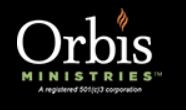How Can We Help?
Difference between Deliverance and Inner Healing
Ken Fish emphasizes a clear distinction between deliverance and inner healing, stating they are not interchangeable. Here’s a breakdown of their differences: Deliverance
- Focus: Deliverance deals with the eviction of a third-party intruder, an evil spirit that should not be present. It’s about removing a demonic influence. The speaker describes it as a process of eviction.
- Nature of the Problem: It addresses demonization, where an evil spirit has attached itself to a person, causing varying degrees of influence. This is not merely a perturbation of human consciousness.
- Process: Deliverance involves commanding the evil spirit to leave, using the authority of Christ. Ken emphasizes that it’s a power encounter, driving out demons through the authority of God.
- Goal: The goal is to expel the demonic presence. It is the “ejection, the forcing out of evil spirits”.
- Manifestations: Deliverance often involves some kind of outward manifestation, such as coughing, shaking, or crying out as the demons are expelled, but it is not always loud. This is not a “quiet” process.
- Aftermath: Deliverance is not the end of the therapeutic process; it is the beginning. After the demon is evicted, the person needs a period of recovery and rebuilding.
- Analogy: Deliverance is compared to removing a bulletproof vest so that the wound underneath can be healed. If the demonic influence is not removed, healing cannot occur.
- Not a Substitute: Deliverance cannot be substituted by other practices such as inner healing, prayer, communion, or Bible study.
Inner Healing
- Focus: Inner healing addresses the broken soul, dealing with a person’s emotions, memories, and will. It’s about fixing the wounded inner life of the individual. It deals with “soul wounds”.
- Nature of the Problem: Inner healing addresses issues that stem from personal experiences, trauma, and emotional wounds.
- Process: Inner healing involves ministering to the individual’s emotions, memories, and will to bring restoration and wholeness.
- Goal: The goal is to heal and restore the broken areas of a person’s soul.
- Relationship to Deliverance: Inner healing can be a useful tool to use in conjunction with deliverance, particularly when demons are deeply entrenched. Inner healing can undermine the foundation of demonic influence by healing soul wounds, making it easier for demons to be evicted. The speaker describes it as “cutting the rug out from underneath them”.
Key Differences Summarized
| Feature | Deliverance | Inner Healing |
| Primary Focus | Eviction of a demonic presence (third-party intruder) | Healing of a wounded soul (emotions, memories, will) |
| Nature of Issue | Demonic influence or control | Personal wounds and brokenness |
| Process | Expulsion of demons through the authority of Christ, a power encounter. | Ministering to the individual’s soul to bring healing and restoration. |
| Goal | Removal of demonic influence | Healing of inner wounds, soul restoration and wholeness |
| Action | Eviction | Fixing |
Why This Distinction Matters
The speaker emphasizes that confusing deliverance with inner healing can lead to ineffective ministry. If a person needs deliverance, inner healing alone won’t solve the problem. Likewise, if a person needs inner healing, deliverance alone will not fix the brokenness of their soul. Both can be necessary for true healing and restoration of a person’s life and a complete ministry to the whole person
- Title: Deliverance in the Modern Age
- Speaker: Ken Fish
- Start time: 20:03
- End time: ….

Orbis Ministries – Link to Ken Fish’s Ministry material.
